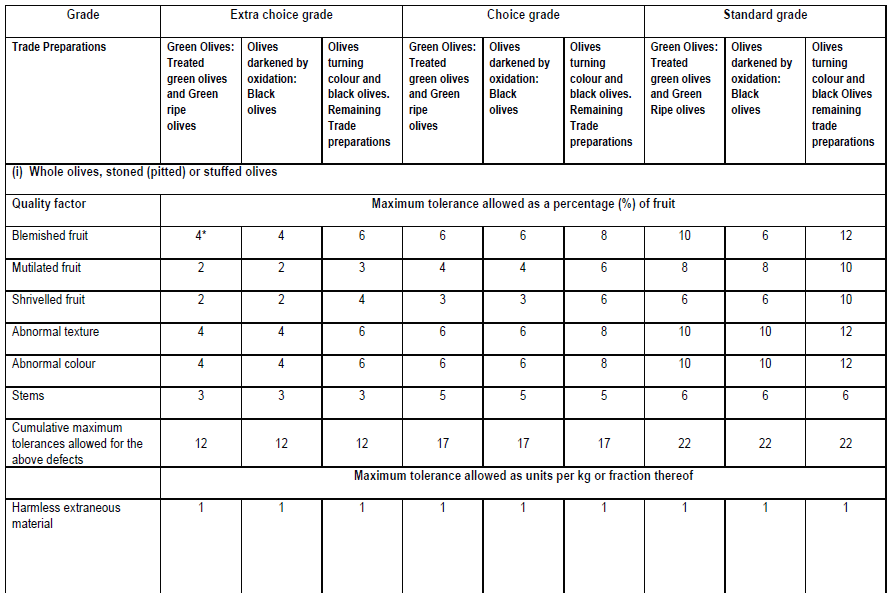


Agricultural Product Standards Act, 1990 (Act No. 119 of 1990)RegulationsRegulations relating to the Grading, Packing, and Marking of Table Olives intended for sale in the Republic of South AfricaMethods of Inspection19. Permissible deviations |
| (1) | The maximum permissible quality deviations allowed for each grade are as follows, depending on the style concerned: |
Table 1 :
Permissable Deviations for Whole, Stoned or Stuffed Olives


* In addition, at least 30% of the fruits shall be free from any blemishes.
Table 2 :
Permissable Deviations for Broken, Chopped, Minced, Sliced and Other Segmented Styles of Olives
Trade preparations
|
Green olives |
Olives darkened by oxidation |
Olives turning colour and black olives |
|
|||
Quality factor |
Maximum tolerance allowed |
||
Harmless extraneous material (units) |
2 |
2 |
2 |
Stems (units) |
4 |
6 |
5 |
Blemishes and wrinkles (%) |
25 |
25 |
25 |
Stones (pits) or stone (pit) fragments (average unit) |
1.0 |
1.0 |
1.0 |
Soft and excessive soft (%) |
10/5 |
10/5 |
12/6 |
Broken pieces among segmented/sliced olives (%) |
50 |
50 |
50 |
| (2) | The maximum permissible deviations allowed for the declared drained mass are as follows: |
Table 3 :
Permissable Deviations for Drained Mass [Regulation 11]
Container size |
Maximum drained mass |
Container with drained mass less than 200g |
5% |
Container with drained mass between 200g and 500g |
4% |
Container with drained mass between 500g and 1 500g |
3% |
Container with drained mass more than 1 500g |
2% |